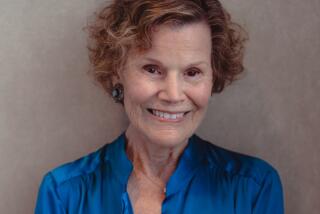It took more than just two to tango
PAUL MAZURSKY’S 1973 “Blume in Love” -- which Warner Home Video is releasing Tuesday as part of a Valentine’s Day series -- is an unequaled time capsule of Me Decade romantic angst. Sweet, funny and touching in parts, it’s also deeply idiosyncratic and painfully awkward. In fact, it’s hard to believe a film this dark, with such emphatically flawed characters, ever passed muster as a romantic comedy.
As a filmmaker, Mazursky is still most identified with the 1970s. His most enduring work dates from the early days of women’s liberation, long before the age of political correctness. In films such as “Bob & Carol & Ted & Alice” and “An Unmarried Woman” he chronicled the sexual revolution from the vantage point of the nearly middle-aged middle class, a group whose willingness to exploit the new freedom was not always matched by its emotional ability to deal with it.
“Blume” is the story of an unlikely reconciliation. Beverly Hills divorce lawyer Stephen Blume (George Segal) finds his six-year marriage suddenly over when his wife, Nina (Susan Anspach), an earnest social worker, catches him in bed with his secretary.
The film unfolds in flashback as Blume mopes around Venice, Italy, where he and Nina once honeymooned. Sipping espressos in Piazza San Marco alone, wistfully watching the public displays of affection around him (there’s a distracting, unfunny nod to “Death in Venice”), he recalls the events leading to that point, from their courtship to the desperate measures in the aftermath of the breakup.
Not long after calling it quits, Nina shacks up with Elmo (Kris Kristofferson), an out-of-work hippie musician. Blume starts seeing a divorced family friend, Arlene (Marsha Mason), but he insists the relationship is purely one of convenience and he’s now suffering from impotence to boot.
The less Nina wants him, the more persistent Blume becomes. Segal dares to play this improbable romantic hero as needy, selfish and almost sociopathic. A curious paradox emerges: Blume, despite being apparently consumed by thoughts of his ex-wife, remains something of a self-absorbed monster. At times he seems less obsessed with Nina -- played by Anspach as a stiff, passive cipher -- than with the idea of getting her back.
Complicating Blume’s quest is his inability to work up much animosity toward his romantic rival. The scenes in which he bonds with Elmo are among the funniest and warmest in the film, a nod to “Jules and Jim,” a movie that looms large over Mazursky’s body of work. A newcomer at the time, Kristofferson, who also appeared in Sam Peckinpah’s “Pat Garrett and Billy the Kid” that year, is charming and confident, and the fine cast includes Shelley Winters, hilarious in an extended cameo as a weepy client of Blume’s.
“Blume” takes a creepy, controversial turn in the final act -- skip this paragraph if you don’t want the ending spoiled. Blume and Nina do eventually reunite, but they don’t get there as expected. His plan to win her over appears to involve harassment, browbeating and stalking. One night, he goes much too far, physically forcing himself on her. She becomes pregnant from the rape, and they grow closer as a result. The scenario is grotesque and, to give Mazursky the benefit of the doubt, one hopes more indicative of Blume’s misogyny than the filmmaker’s. In any case, the rape and its repercussions illustrate the problematic dynamic between the characters: He’s dogged, she’s acquiescent.
The sexual politics of “Blume” may be dated and even troubling, but beneath the title character’s clueless bumbling is a somewhat pained attempt to confront shifting notions of coupledom and the limits of the sexual revolution.
The final scene, scored perhaps ironically to Wagner’s “Liebestod,” ranks as one of the most ambivalent happy endings of all time.
More to Read
Only good movies
Get the Indie Focus newsletter, Mark Olsen's weekly guide to the world of cinema.
You may occasionally receive promotional content from the Los Angeles Times.










